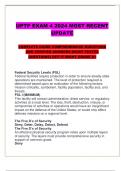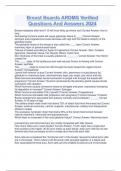‘In dystopian literature, writers explore the relationship between people in a position of
control and those who are controlled.’
Both Orwell’s 1984 and Atwood’s The Handmaid’s Tale showcase asymmetrical relationships
between the ‘people… in control’ and ‘those who are controlled.’ Despite being created
under vastly different contexts, with Orwell writing during the Age of Totalitarianism, and
Attwood, during the rise of the Conservatism in Reagan’s America, the texts bear stark
similarities in their portrayal of hierarchy. Both INGSOC and Gilead employ the destructive
applications of language and surveillance as vehicles for dehumanisation, exemplifying the
all-encompassing command of the two states. However, the exploration of relationships
across the two texts is not merely limited to that between those ‘in a position of control and
those who are controlled’, with personal romance also becoming key.
The ruling parties of both works rely on carefully constructed systems of language to control
their citizens. Orwell asserted in Politics and the English Language that political rhetoric is
designed ‘to make lies sound truthful… to give an appearance of solidity to pure wind.’
Indeed, this is further proven in both his and Attwood’s novels. The Gileadean rhetoric of
‘Aunts’, ‘Angels’ and ‘Salvagings’ employs words supposed to connote emotional
reassurance as euphemisms for tyranny, ensuring that the suppressed remain compliant.
INGSOC uses the term ‘Big Brother’, the paradoxical claims that ‘War is Peace. Freedom is
Slavery. Ignorance is Strength’, and the propagandized ‘victory gin’ and ‘victory mansions’ to
the same effect; as Erika Gottleib remarks, ‘Victory stands for failure’, this ‘failure’ perhaps
being the perversion of language for political purposes. Thus, both writers warn of the
subtle manipulation of language used by regimes to promote orthodoxy, likely seeking
inspiration from previous totalitarian states such as Hitler’s Germany, where euphemisms
such as ‘the Final Solution’ and ‘the Special Treatment’ were used to refer to genocide.
Interestingly, since the development of nuclear weapons, many critics observe that this
caution bears an added layer of significance, with Bossche asking ‘Did the world of today
replace… “War is Peace” with “Nuclear Arms is Peace?”’ Certainly, with political leaders
often promoting nuclear development as an effective policy of deterrence, yet conveniently
dismissing the threat of ‘mutually assured destruction’, it appears that the answer to
Bossche’s question is clear. Nevertheless, in presenting regimes whose authority is
bolstered by the deceitful choice of language, both Attwood and Orwell make known the
power of those in command.
However, it is not merely the usage of language that enables the governmental forces of
both dystopias to maintain authority; the active censorship and destruction of language play
a pivotal role in perpetuating totalitarian rule, and indeed, showcases the everyday
restrictions imposed on ‘those who are controlled’. Inspiring later works such as Bradbury’s
Fahrenheit 451, where the burning of books becomes symbolic of the erasure of individual
expression, in 1984, ‘Newspeak is the only language in the world whose vocabulary gets
smaller.’ In his portrayal, Orwell draws on the concept of ‘linguistic determinism’ which
gained prominence in the early 20th century; the likes of Benjamin Lee Whorf argued that
language is a ‘prison’ which determines, and therefore, limits the range of human thought.
This is echoed in Syme’s remark that ‘the whole aim of Newspeak is to narrow the range of
thought’ so that ‘thoughtcrime [is] literally impossible’, which indicates the power of
Newspeak in ensuring orthodoxy becomes ‘unconsciousness.’ Certainly, this justifies Jim






